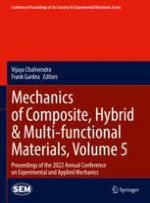2023 | Buch
Mechanics of Composite, Hybrid & Multi-functional Materials, Volume 5
Proceedings of the 2022 Annual Conference on Experimental and Applied Mechanics
herausgegeben von: Vijaya Chalivendra, Frank Gardea
Verlag: Springer International Publishing
Buchreihe : Conference Proceedings of the Society for Experimental Mechanics Series
